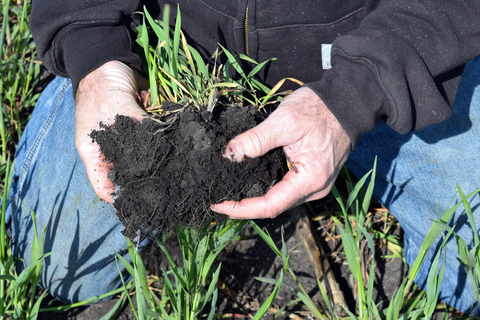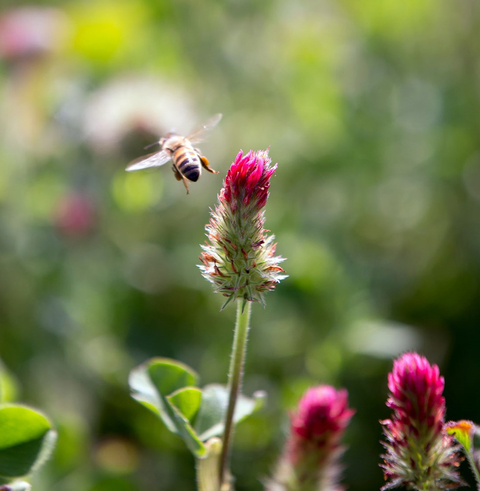Have you ever felt like you want to invest in soil health, but it’s hard to know how to apply soil health concepts on a small scale? Cover crops are an important tool to improve the health of your soil.
While many of the resources available to help growers navigate cover crops are aimed at larger farms, you can use cover crops at any scale.
Why use a cover crop?
Soil health thrives when we can keep living roots in the soil. Living roots help maintain nutrients in the upper soil, they support a diversity of soil microorganisms, and they can help the soil retain water. Cover crops also build soil organic matter when they are broken down and reincorporated into the soil and, depending on the species, they can provide pollinator habitat and fix nitrogen.
When should I plant?
In Minnesota, we typically only grow crops for a couple of months, leaving the soil bare the rest of the time. Any time you don’t have a primary crop growing, you can grow a cover crop. Common windows include before planting your main crop, in between crops, and after you’ve harvested. Here are three example scenarios:
- If you plant tomatoes or pumpkins in mid-June, you could plant a cool-season cover crop in early May, and work it into the soil in June before planting your main crop.
- If you use a bed to grow an early-season crop like lettuce, you might harvest in May or June and then wait to plant that bed again until later in the summer. You could grow a fast-growing cover crop in the window between plantings.
- Some crops like cucumber and zucchini get pulled around early August, leaving the soil bare for the remainder of the season. You could plant your cover crop after harvesting your main crop, and either allow it to die over the winter or cut it and work it into your soil the following spring.
You can grow a cover crop during the main season in areas that are not being used. A common example is planting clover between rows instead of mulching.
What should I plant?
There are three main things to think about when choosing a cover crop for your space:
Will it die over the winter?
Most cover crops will naturally die over the winter. Others, like winter rye, survive the winter and need to be killed and worked into the soil. In a small garden, a species that will die over the winter is easier to manage.
Farmers who use cover crops that overwinter have equipment to get rid of the crop. You could do this with a machete or a very tough lawnmower, but if you’re trying a cover crop for the first time, a winter-killed species will be less work.
What benefits are you looking for?
Do you want your cover crop to fix nitrogen? If so, make sure to choose a legume like peas, vetch, clover or beans.
Do you want it to provide food for pollinators? If so, choose a flowering crop like buckwheat, phacelia or clover, and make sure to read the seed label in order to plant it with enough time for it to flower before the first freeze.
When are you planting?
Depending on when you plant your cover crop, you may have limited options. The Midwest Cover Crop Council has an excellent decision-making tool with a long list of cover crops and planting windows for your county.
Say you wait until September to plant a cover crop, the tool will tell you which species can be reliably planted in September in your area, leaving enough time for good establishment before the first freeze. Other cover crops don’t do well in the summer heat—the tool will tell you which cover crops can reliably establish in August, and which cannot.
How do I plant a cover crop?
Many garden stores sell cover crop seeds, as do vegetable seed catalogs. The seed company should tell you the recommended amount of seed for your area. Most cover crops should be planted fairly densely, more like a crop field than a vegetable garden.
Depending on your scale, you may be able to seed by hand. One simple trick that mid-size growers use is drilling seed-sized holes in a 5-gallon bucket, filling the bucket with seed, and walking up and down the field shaking the bucket for even seeding.
For best results, start with a weed-free seedbed and make sure to fertilize your cover crop like you would a regular crop.
One of the goals when using a cover crop is to establish as much biomass as possible, which you can then work back into your soil as organic matter. If a crop is adequately fertilized, it will be more likely to produce a healthy amount of biomass.
For more information, see Cover crops and green manures.



